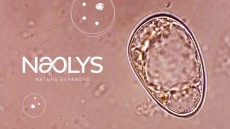Accelerating recovery: Kao outlines plans to raise cosmetics business back up to pre-pandemic levels by 2023
![Kao Corporation is working to put its cosmetics division back on a path of high growth with a series of moves. [Kao Corp]](/var/wrbm_gb_food_pharma/storage/images/_aliases/wrbm_large/publications/cosmetics/cosmeticsdesign-asia.com/headlines/business-financial/kao-outlines-plans-to-raise-cosmetics-business-back-up-to-pre-pandemic-levels-by-2023/12481847-1-eng-GB/Kao-outlines-plans-to-raise-cosmetics-business-back-up-to-pre-pandemic-levels-by-2023.jpg)
The firm’s cosmetics business suffered net sales losses of 14.7% on a like-for-like basis and its operating margin fell by 5.9% – a consequence of the pandemic impacts in Japan and Europe.
The impact on the cosmetics business was also greater because of its higher ratio of make-up products, which is approximately 10% higher than the market.
The base and lip make-up categories continued to suffer because of the change of consumer habits such as mask-wearing.
According to Kao, the base make-up category was only at 70% of 2019 sales levels, while the lip category remained at less than 40%.
On the other hand, eye make-up sales grew approximately 130% to 140% compared to 2020, exceeding 2019 levels.
Kao noted that these losses were in line with its expectations and said the firm has been on the road to recovering as of March.
“The figures are pretty challenging, but they are also in line with our expectations. We are seeing a strong recovery in March and April,” said Kenichi Yamauchi, senior VP of accounting and finance.
Back to form
One of the goals of Kao moving forward is to bring the cosmetics business back to its pre-pandemic levels by 2023.
“We were able to increase our top line and profits in 2018 and 2019, but we were hit hard by COVID-19. We are now working to bring our business back to the pre-COVID levels of 2019 by 2023. After that, we hope to put our business on a high-growth trajectory,” said Yoshihiro Murakami, head of the cosmetics business.
Murakami, who is also the president of Kanebo, said that the firm was aiming towards a 15% profit margin, adding that it would be challenging.
“Unless we steadily engage in structural reform and increase marketing spend, top-line growth and 15% profitability will be hard to achieve. We will strive to reduce the cost of goods sold and fixed costs by about 5%. We are working through raising operating income margins to 14% and then to 15% while making firm investments and marketing expenses.”
To keep up with the changing market, the company has decided to replace two of its existing R8 make-up brands, Lunasol and Coffret D’or, with skin care brands Dew and Milano Collection.
Kao’s R8 portfolio is a group of brands marketed mainly at the Japanese market, consisting of brands such as Evita and Allie.
“In light of COVID-19 market conditions and customers have been changing. So, in accordance with these trends, we have decided to replace the two brands that are mainly make-up brands to two skin care brands that are promising and have high profitability,” said Murakami.
He added that Lunasol and Coffret D’or would continue to be important make-up brands for Kao and it would continue to develop both brands moving forward.
Kao’s global plans
Another of the firm’s measures to enhance its cosmetics business was to expand its digital capabilities.
In January this year, the company established the DX Co-Creation Centre to accelerate the firm’s shift to e-commerce.
“We will work on enhancing our value through user experiences and by leveraging digital to shift away from being just a manufacturer of products. As consumers are changing considerably, we are currently promoting various digital communication activities for each brand,” said Marukami.
He added that the firm will also focus on its overseas markets, including Europe, where it sees potential for brands such as SENSAI and Molton Brown despite the tough market conditions.
In China, where the business has been performing well, Kao is aiming to strengthen its premium beauty brands, which consists of brands such as SENSAI, Kanebo and est.
“In China, we are very strong in the masstige segments with brands like Curél and Freeplus. But on the other hand, there’s still a lot of potential for prestige brands and we are making a firm attempt in that area,” said Marukami.
Last month, the company unveiled its first retail outlet on Hainan Island, a holiday destination in China, to tap into the growing travel retail market, where it aims to open 20 retail outlets within the next few years.
![Round-up of financial results, M&As and funding drives in the cosmetics industry. [Getty Images]](/var/wrbm_gb_food_pharma/storage/images/_aliases/wrbm_medium/publications/cosmetics/cosmeticsdesign-asia.com/headlines/business-financial/pola-o-right-and-more-feature-in-our-latest-beauty-business-and-finance-update/12904765-1-eng-GB/POLA-O-right-and-more-feature-in-our-latest-beauty-business-and-finance-update.jpg)
![[Amorepacific]](/var/wrbm_gb_food_pharma/storage/images/_aliases/wrbm_medium/publications/cosmetics/cosmeticsdesign-asia.com/headlines/business-financial/amorepacific-lg-h-h-and-more-feature-in-our-latest-beauty-business-and-finance-update/12738465-1-eng-GB/Amorepacific-LG-H-H-and-more-feature-in-our-latest-beauty-business-and-finance-update.jpg)
![[Getty Images]](/var/wrbm_gb_food_pharma/storage/images/_aliases/wrbm_medium/publications/cosmetics/cosmeticsdesign-asia.com/headlines/business-financial/financial-focus-l-occitane-unilever-and-more-feature-in-our-latest-beauty-business-and-finance-update/12656280-1-eng-GB/Financial-focus-L-Occitane-Unilever-and-more-feature-in-our-latest-beauty-business-and-finance-update.jpg)
![Kao is in its digital transformation to enhance the competitiveness of its cosmetics division. [Kao Corp]](/var/wrbm_gb_food_pharma/storage/images/_aliases/wrbm_medium/publications/cosmetics/cosmeticsdesign-asia.com/headlines/business-financial/kao-corp-pumps-136m-into-digital-as-it-seeks-to-offset-cosmetics-sales-slump/12636224-1-eng-GB/Kao-Corp-pumps-136m-into-digital-as-it-seeks-to-offset-cosmetics-sales-slump.jpg)






![[Getty Images]](/var/wrbm_gb_food_pharma/storage/images/_aliases/wrbm_tiny/publications/cosmetics/cosmeticsdesign-asia.com/china/china-focus-latest-developments-in-china-s-booming-beauty-market22/17370102-1-eng-GB/China-focus-Latest-developments-in-China-s-booming-beauty-market.jpg)
![YSL's LoveShine launch has sparked a demand surge in Japan. [YSL]](/var/wrbm_gb_food_pharma/storage/images/_aliases/wrbm_tiny/publications/cosmetics/cosmeticsdesign-asia.com/article/2024/04/24/ysl-loveshine-launch-propels-lip-gloss-sales-to-record-highs-in-japan-since-2020/17372064-1-eng-GB/YSL-LoveShine-launch-propels-lip-gloss-sales-to-record-highs-in-Japan-since-2020.jpg)
![There is significant scope for innovation and new launches in the hair repair sector, especially in soaring markets such as China. [Getty Images]](/var/wrbm_gb_food_pharma/storage/images/_aliases/wrbm_tiny/publications/cosmetics/cosmeticsdesign-asia.com/article/2024/04/24/croda-zeroes-in-on-hair-repair-solutions-as-damage-hair-concerns-surge-in-markets-like-china/17362731-1-eng-GB/Croda-zeroes-in-on-hair-repair-solutions-as-damage-hair-concerns-surge-in-markets-like-China.jpg)



![Lubrizol has extended its partnership with C-beauty major PROYA. [PROYA]](/var/wrbm_gb_food_pharma/storage/images/_aliases/wrbm_tiny/publications/cosmetics/cosmeticsdesign-asia.com/headlines/brand-innovation/lubrizol-bullish-on-potential-of-c-beauty-growth-potential/17362515-1-eng-GB/Lubrizol-bullish-on-potential-of-C-beauty-growth-potential.jpg)


